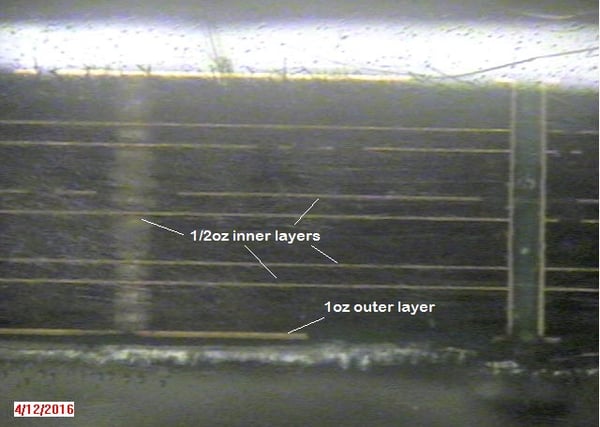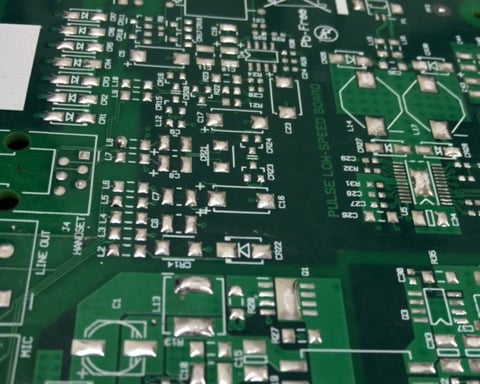As printed circuit board (PCB) designs get more demanding with advances in technology involving complex footprints and added costs to components, incoming inspection of printed circuit boards must take higher priority. PCB inspection processes range from reviewing incoming paperwork thoroughly and full dimensional checks to relying on the board supplier’s final inspection documentation. Some visuals can be done quickly and may just catch an escape that saves the cost involved with assembling non-conforming parts. In this post, we lay out some minimum guidelines that should be reviewed for incoming PCBs.
If improving your incoming inspection process of PCBs is your goal, then acquiring a copy of IPC-A-600 is essential. IPC-A-600 is the official acceptability standard of printed circuit boards and is invaluable when determining non-conformances. It is packed with photographic examples of acceptable and non-conforming attributes.
Have Your Paperwork In Order
First, incoming inspection should keep a copy of the print for the part that was manufactured, as well as (if applicable) an array drawing, copy of the part number, and revision from the purchase order. The part number and revision should be compared to the incoming documentation from the printed circuit board supplier.
A quick review of the array drawing allows received parts to ensure that the overall intended design is met. Receiving single parts when an array is expected is a less painful catch at the receiving stage than at the assembly line.
Checking For Specific PCB Characteristics
By reviewing the PCB print notes you can quickly verify specific characteristics, such as the surface finish of the part, the solder mask color, and the silkscreen color.
The surface finish is usually gold or tin, which are easy to differentiate between. Solder mask color (typically green) is quite evident upon opening the package, while the board markings are usually designated as white or black. When looking for the color of the silkscreen inks, you should also review the board for the date code marking. The date code is typically coded in a four-digit week/year format (ex. 3016 which is week 30 of year 2016).
Electrical Test Verification
While the circuit board part documentation from the supplier should always be reviewed, even more vital is the electrical test report and the Electrical Test(ET) markings on the boards. All double-sided circuit board parts and higher layer counts should be electrically tested for proper continuity.
Solder Sample and Micro-Section

Printed Circuit Board Micro Section
Many suppliers tend to include a solder sample and micro-section with their documentation. The solder sample (per IPC) should be a 2”X2” board section that has been solder analyzed and can be viewed for proper wetting. The solder should have covered all pads smoothly and not have any surface finish exposed. Without a microscope, there is not much that can be determined with a micro-section. However, with multilayered PCBs the copper weights of the layers may be determined. If the outer layer copper is 1–1/2oz finished copper and the inner layers are ½ copper, it is possible to see the difference in thickness in the micro-section.

Printed Circuit Board Solder Sample
Advanced Circuit Board Specifications
If the drawing calls out impedance values, then the copper weights and the stack-up of the layers become very important. If impedance-controlled PCBs are a considerable part of your business, then it becomes imperative to identify a process to verify the board stack-up with your supplier. Impedance testing of the circuit boards by your supplier should also be required.
Finally, one additional feature to be quickly checked is the confirmation of countersink holes. They will be identified on the print and should easily be located on the parts. In production, countersinks start as drilled holes and usually have the countersink added as a secondary process. A quick review will confirm if the secondary process was missed.
Summary
Incoming inspection of printed circuit boards is crucial to improving and streamlining the manufacturing process. No matter how controlled a PCB supplier believes themselves to be, there is always a chance for escapes. Implementation of some or all of the simple procedures reviewed in our discussion may make the difference between a minimal damage escape and an expensive catastrophe.
Key Takeaways
- Start with thorough documentation checks: Always verify the PCB part number, revision, and array format, and compare incoming documentation against the purchase order and prints to catch mismatches early.
- Visually confirm critical features upon receipt: Check for surface finish (gold or tin), solder mask, and silkscreen color, and ensure the date code is correctly marked per IPC standards.
- Verify electrical test (ET) compliance: All double-sided and multilayer PCBs should come with an electrical test report and ET markings to confirm proper continuity and detect potential open or short circuits.
- Review solder samples and micro-sections: Solder samples should show smooth, uniform coverage, while micro-sections (especially for multilayer PCBs) can help confirm copper weights and layer structure when properly examined.
- Advanced features require additional validation: For boards with impedance requirements or mechanical features like countersinks, verify layer stack-ups and ensure secondary machining processes were not missed.

















